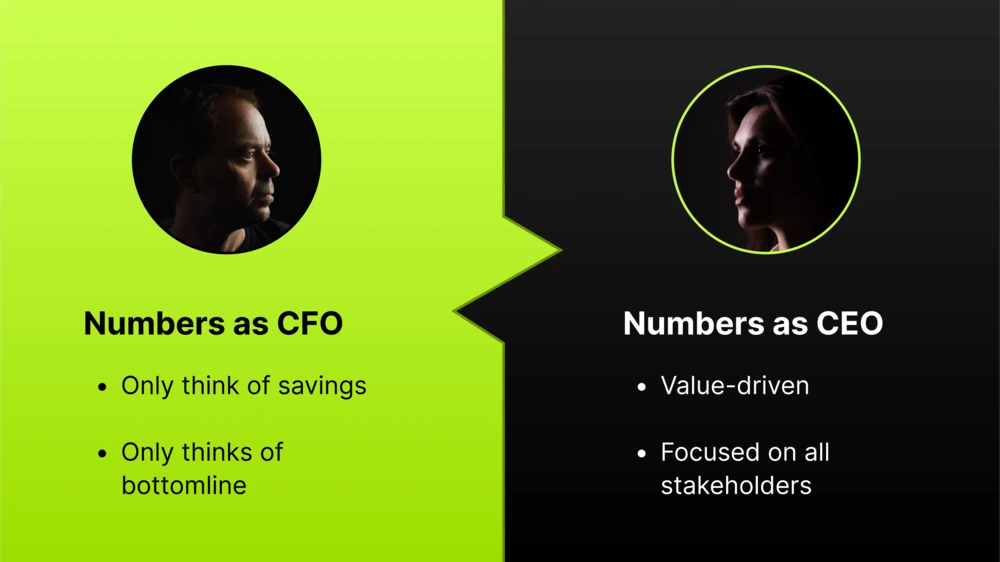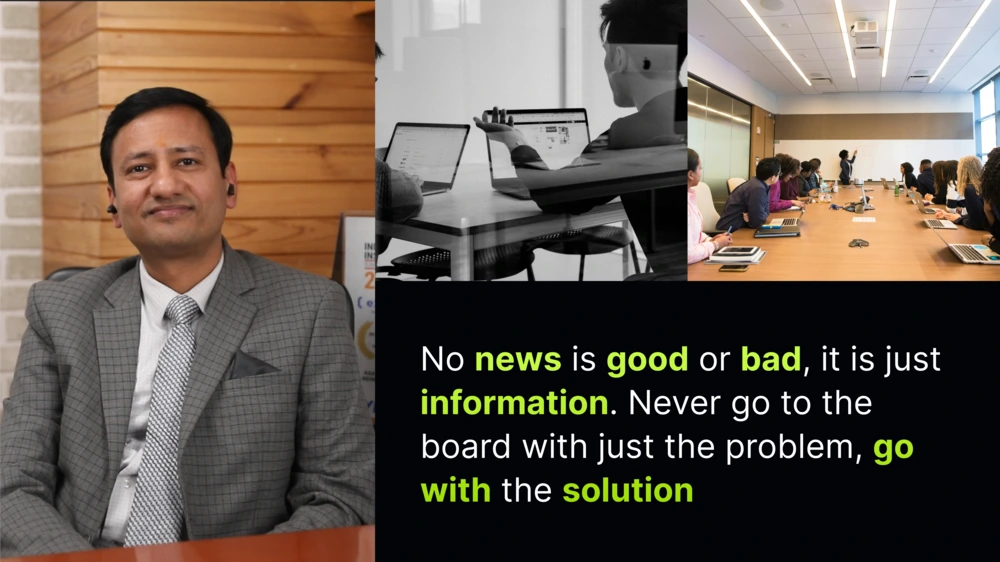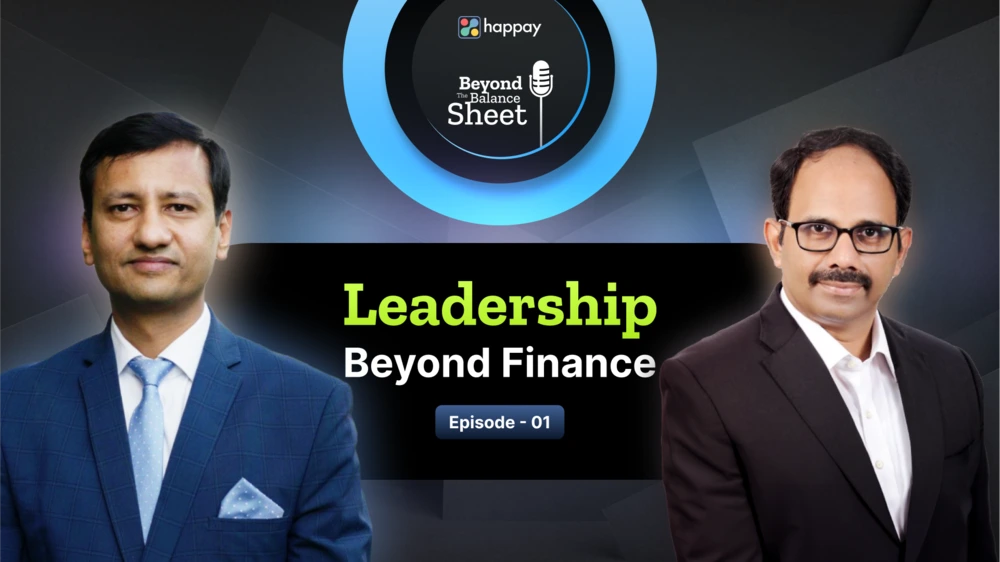Last Updated on November 28, 2025
Beyond the Balance Sheet, our India CFO CEO Chat Series delves into the transformative journeys of Chief Financial Officers who have successfully ascended to the role of Chief Executive Officers. These conversations, rich with insights and practical wisdom, offer more than typical interviews.
In this episode, we feature Gaurav Jain, a Fellow Chartered Accountant and the CEO of AXA France BIV, India Reinsurance Branch. With a career spanning over 18 years across various sectors, Mr. Jain’s transition from CFO to CEO epitomizes strategic prowess and leadership excellence. His story is a treasure trove of lessons for those aspiring to similar heights in their careers.
We’re delighted to have Mr. Jain share his unique perspectives and advice, enlightening CFOs aiming for the CEO role. His journey, marked by significant challenges and insights, provides valuable guidance for professionals on their path to top executive leadership.”
You can watch the entire episode here
The number game just strengthens your business perspective. In 2022, 33% of individuals who left CFO positions became CEOs, a significant increase from 8.8% in 2021. This shift exemplifies the crucial role of the CFO, not just in financial management but in broader strategic leadership within a company
CFO to CEO: The Number Game
Ramesh: Gaurav, as a CFO known for your focus on financial performance and expertise in numbers, how crucial do you think it is also to consider factors beyond financial metrics? Could you elaborate on the wider strategic role a CFO should assume in a company?
Gaurav: Ramesh, through my career journey, I’ve realized that strategic decision-making is crucial, and it significantly adds value, intertwining closely with financial metrics. The journey in strategic decision-making begins with a deep understanding of financial numbers. Knowing your numbers thoroughly is the key to ease in making strategic decisions.
My journey of thinking beyond numbers began when I started viewing business from a different perspective, learning to use my numerical capabilities to expand the business. This led me to contribute significantly to strategic decisions within the entire management, including the board of directors. At this point, I recognized my ability to understand not just numbers but business as a whole, which pushed me towards contributing to business growth.
The thought process and steps involved in this transition were complex, but they eventually led me to believe I could become a chief executive officer someday. And indeed, I have become a CEO today, thanks to the opportunity given to me by my management. As a chief financial officer, one needs to be a strong candidate to reach this level, as highlighted by recent trends. In 2022, 33% of individuals who left CFO positions became CEOs, a significant increase from 8.8% in 2021. This shift exemplifies the crucial role of the CFO, not just in financial management but in broader strategic leadership within a company.
“The journey from a CFO to CEO is not overnight, as it requires a step-by-step approach combining constant learning and developing strategic skills.”
CFO to CEO Journey: Cautions
Ramesh: So, what are the typical pitfalls that CFOs encounter on their path from CFO to CEO? Could you also highlight the key areas of caution that should be considered to avoid these common errors?
Gaurav: Ramesh, it’s essential to recognize that transitioning from a CFO to a CEO is not a quick process; it requires a step-by-step approach combined with continuous learning.
Reflecting on my own career, I became a chartered accountant around 2006-2007, starting as a consultant with EY. The journey from consulting to industry and then to growth wasn’t overnight.
It involved many years of research, understanding, and learning. A crucial part of this journey was developing strategic skills and learning to calculate and undertake risks in business growth accurately. Communication is another key element. Being an effective communicator is vital. It’s important to understand and refine the strategic decision-making process.
Another significant aspect is risk estimation and management. To ascend to a CEO position, one must be adept at taking well-calculated risks. It can be challenging, as CFOs by nature, tend to be risk-averse. However, overcoming this inclination is essential for those aspiring to become CEOs.
The numbers themselves don’t change; rather, it’s the perspective on them that shifts.
CFO to CEO journey: Evolving perspectives

Ramesh: How did your perspective on financial metrics evolve from your time as a CFO to when you assumed the role of CEO? Could you elaborate on the differences in how you approached numbers in both positions?
Gaurav: “Ramesh, it’s indeed a tricky question. The numbers themselves don’t change, but rather, it’s the perspective on them that shifts. As a CFO at the start of my career, I focused predominantly on cost savings and bottom-line improvement. However, as a CEO, my outlook expanded to encompass the value delivered to shareholders and other stakeholders.
We know stakeholders encompass a broad spectrum, including shareholders, investors, lenders, third parties, employees, the government, and society. ESG (Environmental, Social, and Governance) has become increasingly important. As a CFO, the focus might be narrower, often centered on one or two stakeholder groups, like lenders and government compliance, especially concerning taxation.
However, sometimes, other stakeholders were inadvertently overlooked. In contrast, as a CEO, the role demands attention from all stakeholders. This holistic approach is critical for the success and sustainability of the organization. It’s not just about the bottom line for shareholders but also considering the broader impact on society, government, and the country. Therefore, when evaluating numbers, it’s essential to view them not just from the perspective of a few stakeholders but in a way that encompasses all relevant parties, thereby fostering a truly successful organization.
Communicating effectively across various stakeholders is almost like mastering the art of storytelling, right? It’s like being part of a ‘CFO, CEO, board trinity,’ where each word creates your reality.
CFO to CEO Journey: Communication
Ramesh: Brilliant insights, thank you. You highlighted communication as a crucial skill in transitioning from CFO to CEO. I’ve been delving into this topic and stumbled upon the concept of ‘auto storytelling’ for CFOs. It seems like CFOs often get caught up in number-crunching and jargon, turning their reports into a snooze fest for others. Communicating effectively across various stakeholders is almost like mastering the art of storytelling, right? It’s like being part of a ‘CFO, CEO, board trinity,’ where each word creates your reality. As a CFO, you can’t just throw numbers and blunt performance stats at people. You’ve got to dress them up, make them presentable, and serve them in a way others can digest and appreciate, right?
So, I’m curious: in your journey, how did you master this art of financial storytelling? Did you have to repackage and tailor your communication to suit different stakeholders? Could you share some real-life examples from your career where you effectively used this approach?
Gaurav: Ramesh, you’re absolutely right. Communication is indeed vital for success in any role. Let me give you an example from my time at E2Z, a major listed entity in the Infrastructure space, where I handled relationships with around 17 lender banks. These banks are as crucial as any investor or shareholder since they have invested in your company.
I learned the importance of presenting information effectively during this phase. Initially, as a CFO, I thought my job was just to provide stock statements, balance sheets, and financial reports. However, when interacting with these bankers, who often inquired about various business aspects, I realized that communication isn’t just about numbers or financial statements but about the company as a whole.
This realization led me to work closely with my managing directors on presenting our company comprehensively to lenders and investors, ensuring we conveyed our true value. Moreover, I always followed the principle of keeping my cabin door open. This approach allowed anyone, be
it a colleague or employee, to approach me with their questions and challenges, fostering effective communication from the ground up. If I had kept my door shut, it would have hindered our organization’s growth by delaying task completion and problem-solving.
As a CEO, the scope of communication expanded further. I understood that different stakeholders have varied interests. The government, for instance, is more interested in what we do for the nation rather than just our bottom line. Society cares about our initiatives in ESG and CSR, not just our financial performance. Therefore, tailoring communication to each stakeholder’s interests is crucial. This adaptability in communication is a key learning I incorporated into my career to ascend to the next level.

It’s an amusing yet accurate aspect of corporate dynamics: the CEO often steps forward with good news, while the CFO bears the weight of the bad. This reality underscores the CFO’s role, which demands not only financial savvy but also a mastery of delicate communication.
Ramesh: You talked about government and managing government relationships, right? Talk to us a little more about your personal story around this. How did you go about managing many stakeholders, including the government?
Gaurav: From my personal experience, my initial encounters with the government, specifically the tax department, were a defining aspect of my role as a CFO. It’s almost a rite of passage, dealing with tax assessments, representations, and filings. The tax departments seem to have a special affinity for CFOs, often preferring us to be right there in their offices.
Communicating effectively with them is crucial. It’s about showing them the value we can bring to the nation and the country, which makes discussions smoother. For instance, I recall a meeting with the Revenue Secretary a couple of weeks back regarding some issues in the GST framework affecting the insurance industry. The key was presenting our challenges and fostering understanding, which opens the door to solutions.
This communication skill is not limited to government interactions. As a CFO, you must establish a robust business chemistry with your CEO and the board. Often, you’re in the unenviable position of being the bearer of bad news. It’s somewhat humorous but true that if there’s good news, the CEO might take the lead in announcing it, but when it’s bad news, it often falls on the CFO’s shoulders. This dynamic is part and parcel of the CFO role, requiring not just financial acumen but also a knack for delicate communication.
My approach to board communications is straightforward: present not just the problems, but also the solutions. This strategy adds real value and showcases the depth of my involvement in the organization’s daily workings.
Changing communication strategies
Ramesh: So, tell us, Gaurav, in your experience, how do you approach discussions with the board when you need to convey poor performance or potential setback business news? Could you elaborate on your strategy for these communications? Is it a straightforward, factual presentation, or do you employ a certain method of packaging and framing the information to provide the right perspective?
Gaurav: “Ramesh, I fully grasp your point. In my view, news, whether perceived as good or bad, is simply information that must be communicated. Indeed, it’s often the role of the CFO to present news to the board that may not always be positive.
Reflecting on my early career days at EY, I learned an important lesson. As chartered accountants, we were often pleased to identify issues in balance sheets, almost competing over who could find more. However, when I proudly reported my findings of several issues to my partner, expecting praise, he challenged me by asking, ‘Then what?’ He emphasized that identifying issues was only valuable if accompanied by solutions, especially since he had to sign off on these balance sheets.
This lesson has been pivotal in my approach, even as I progressed to board-level communications. When I present challenging news to the board, I ensure that I also bring potential solutions. This approach adds more value to the board discussions. The board may meet infrequently, but as someone involved in the organization’s daily operations, I understand the importance of not just identifying problems but also proposing solutions. This ability to offer solutions alongside identifying issues is what truly adds value and significance to my role.

I can offer two major insights. First is that avoiding risk can stagnate growth personally and for the organization. Taking calculated risks is essential for advancement.Secondly, understanding risk management is vital. It involves not only recognizing potential risks but also knowing how to mitigate them effectively.
Closing thoughts
Ramesh: Gaurav, that was valuable advice. Beyond communication and soft skills, are there any other unique insights from your experience that could help first-time CFOs and seasoned professionals on their path to becoming a CEO?
Gaurav: Absolutely, there are two key additional insights I’d like to share. Firstly, learning how to undertake risks is crucial for a CEO. The adage ‘no risk, no gain’ holds true in business. As a CFO, I was initially hesitant to take risks. However, I learned that avoiding risk can stagnate growth personally and for the organization. Taking calculated risks is essential for advancement.
Secondly, understanding risk management is vital. It involves not only recognizing potential risks but also knowing how to mitigate them effectively. It includes developing strategies to manage risks and turning them into opportunities that benefit the organization. These risk-taking and risk-management insights have been instrumental in my journey and are critical for anyone aspiring to move from CFO to CEO.
Conclusion
As we wrap up this insightful discussion, it’s fascinating to note the shift in perspective from CFO to CEO. Often, CEOs are perceived as having an external lens, focusing outward, whereas CFOs are seen with an internal lens, concentrating on the innards of the organization. This transition from an internal to an external focus is a pivotal part of the journey.
An intriguing HBS survey sheds light on this. It asks hundreds of CEOs about their biggest challenge and the key to effective leadership. The overwhelming response was the ability to handle unforeseen events, a skill essential for a successful CEO. This ability to adapt and react is about staying afloat and steering the ship through uncharted waters.
With his experience in both roles (CFO and CEO), Gaurav offered excellent insights about the interplay between those roles, the challenges, and the successes. We thank Mr. Gaurav Jain for giving us his time and helping more CFOs take on this transformative journey










Discussion about this post